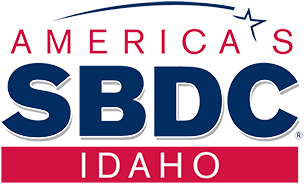
Does your organization have meeting-itis?
Maybe you have long, endless, aimless rambling meetings? Or a Coffee-and-Gossip Hour disguised as a meeting? Do people bring embarrassing personal issues to meetings? Does your team come together and accomplish absolutely nothing? Do you do all the talking, accompanied only by a soundtrack of snoring and the tap-tap-tap of phones?
Meetings are an opportunity, a gift of time together with a group of people to review, plan, discuss, understand, and truly communicate with each other. There is no other time as valuable or profitable as meeting time. Then why do business owners almost unanimously say that they either hate meetings or don’t have them at all?
Dale, civil engineer: “Meetings are a boring revision of current workflow and projects. A complete waste of time.”
Suzanne, linen service: “Meetings, no. I don’t know what to say!”
Donna, bookkeeping service: “We used to but we just got too busy.”
Mark, plumbing contractor: “We argue and we don’t really get anything accomplished.”
Steve, auto parts manufacturer: “People don’t want to come to meetings. They don’t think anything there concerns them.”
Jaime, HR professional: ”These managers are on so many committees that they have no more time for team meetings.”
Imagine a meeting that everyone looks forward to and participates in. If you could communicate with each other in a meaningful, informative, decisive manner, would you see the value of meetings?
Your mission, should you choose to accept it, is to use these top-secret rules to create successful meetings.
Secret Rule #1:
Make sure that you can answer the following question:
Why are we meeting and what are the expected results?
Secret Rule #2:
Do not have a meeting if any of the following are true:
- The purpose has not been well defined.
- There has not been adequate preparation.
- One person needs to resolve a problem with another person.
- You are only meeting because of tradition.
Secret Rule #3:
Have meetings that meet at least one of these criteria:
- You need to coordinate core work.
- You need to make a decision that impacts everyone.
- You have an issue that requires input from everyone.
- You have information to share that affects everyone.
- You need to review performance or plan the future.
Secret Rule #4:
An agenda written in advance and delivered with enough warning can:
- Help people be prepared.
- Allow people to know what will and what will not be discussed.
- Keep people on task.
- Allow people to decide what is relevant to the group for addition to the agenda.
Unless you are required to follow Robert’s Rules of Order, you will only need to include the following:
- Review of the agenda
- Questions regarding past meeting minutes
- Action items
- New business
- Information share
- Next meeting plans
- Meeting evaluation
If you are already wondering how you will fit all this meeting prep into your schedule, or you regularly bring your list to meetings and it just doesn’t work, here are some tricks for using an agenda to develop buy-in for your meetings.
- Delegate. Or better yet, rotate responsibility amongst meeting members. (Rotate every meeting or every few meetings.)
- Prepare an agenda. Announce that a meeting agenda is being compiled a week prior to the meeting and ask for contributions. Deliver a first draft a day later. Give 24-48 hours for revision or additions. Put out a final agenda no later than 48 hours before a meeting. Post it, email it, and hand it out. Make sure that everyone sees the agenda before the meeting.
- Stick to the agenda. This habit eliminates off-topic venting and gossip. When items come up between meetings, develop the habit of saying, “Put it on the next agenda.” This helps people think about what they want to add and better yet what they don’t want to add. If it wasn’t serious enough for the agenda it will not be discussed. And if you are the team leader, it will help keep you and your checklist from running roughshod over your fellow meeting-dwellers.
A hint: the team leader should not prepare the agenda. Generally, you will have many of your own agenda items for the meeting. So to make it more democratic, have someone else compile the agenda.
Secret Rule #5:
You need meeting minutes. But they don’t have to be publishable.
Minutes just have to be good enough for someone missing the meeting to get the salient points. Most importantly, the team needs a reminder of what decisions and commitments were made. Do I hear a collective moan? Rules of thumb:
- Delegate or rotate the job. Here’s another opportunity to distribute the work while making your team stronger. Nothing makes team members appreciate meeting minutes more than having to prepare them. But be ready to be flexible about a variety of reporting styles.
- A first draft must be delivered – posted, handed out, e-mailed to everyone – no later than 24 hours after the meeting. Give 24-48 hours for revisions or additions. Keep a permanent binder for meeting minutes that everyone has access to.
Secret Rule #6:
Start assigning, delegating (or better yet, rotating) the following meeting roles:
The Facilitator
- Develops the agenda (with input from everyone).
- Notifies people of changes to the agenda.
- Handles meeting logistics.
- Leads the meeting.
- Ensures accomplishment of outcomes.
- Manages the discussion.
- Contains tangents.
- Summarizes the information and calls for action.
The Recorder
- Keeps minutes.
- Keeps a list of commitments and action items.
- Maintains other team records.
- Circulates minutes after meeting.
- Notifies people of changes to minutes.
The Moderator
- Pays attention to group dynamics.
- Reminds participants to use discussion skills.
- Ensures a balance of participation.
- Calls on people in turn.
- Keeps time.
- Conducts evaluation of each team meeting.
Rules of thumb:
Create buy-in by rotating roles amongst meeting members. Include the upcoming assignment of the roles in each agenda and meeting minutes. It is acceptable to start this habit by asking for volunteers but eventually, every team member should rotate through the roles. That’s buy-in, in action.
The team leader should not be assigned these roles. Let the other team members lead and moderate you. A great meeting is one where the moderator asks you to listen so that others can talk. They are starting to love their meetings!
Secret Rule #7:
Evaluate your meetings.
Even if you spend only the last 5 minutes of each meeting doing this, it is the surest way to improve your meetings while building trust and honesty about what your team likes and doesn’t like about its own meetings. It is the time you spend to improve and make meeting time more constructive and valuable. Hint: Let the moderator lead this discussion, not the team leader. People can be intimidated by the boss asking if they liked her meeting. As the team leader, you can feel free to offer an opinion but delegate or rotate the moderator role.
Secret Rule #8:
Your team needs to create meeting norms.
These are the rules that are agreed to that provide the atmosphere your team wants at their meetings. There is no better way to get everyone engaged than creating and enforcing team norms. Here are some sample meeting norms:
- Start and end on time. (What is the time, day and length of each meeting?)
- Prepare an agenda prior to each meeting. (Who will do it? When will the agenda be delivered? How do we add to the agenda?)
- Keep minutes of each meeting (How and by who will this be accomplished?)
- Encourage discussion and a diversity of opinions. (What skills do we need to become good at this?)
- Contain tangents. Speak one person at a time. (How can we protect this? Should we have a “speaking baton”?)
- Listen without judgment. Be kind.
- Evaluate the quality of each meeting. (How can we make our meetings better?)
What’s the result of all this fuss over making better meetings?
Dale: “My team was really excited to have an opportunity to have a meeting about meetings.”
Suzanne: “The team is really excited to continue having meetings. And I don’t have to say anything if I don’t want to.”
Donna: “Meetings have become very productive time.”
Mark: “It is hard for me to be quiet sometimes but when I do I find that we don’t argue, people actually have a lot to say.”
Steve: “People started to offer some interesting solutions to problems that have plagued us.”
Jaime: ”When the managers take these ideas and start to engage their teams, some great results are happening.”
Are you ready to accept the Mission: Impossible challenge like Dale, Suzanne, Donna, Mark, Steve, and Jaime did?
The assignment is: HAVE A MEETING ABOUT MEETINGS. Here is your agenda:
- Create an Agenda
- Rotate Meeting Minutes
- Discuss Evaluation
- Assign Roles
- Create Norms
- Remember to delegate wherever possible.
Then, watch how letting the team run their own meetings in line with these top-secret rules will change the way you all feel about meetings.
If you want help developing great meetings, a consultant with Idaho SBDC in your region is available to help. Click here to set up an appointment.
 Ruth Schwartz joined the Idaho SBDC in March 2020, She has been a lifelong entrepreneur and business owner. She spent 25 years in the music industry: radio, publishing, producing, and retail.
Ruth Schwartz joined the Idaho SBDC in March 2020, She has been a lifelong entrepreneur and business owner. She spent 25 years in the music industry: radio, publishing, producing, and retail.
Most notably, Ruth started, built, and sold a $10 million, wholesale music distribution company. She has owned and operated a leadership training and coaching company, a debt collection company, and an Amazon store.
Ruth is a Professionally Certified Business Leadership Coach (PCC) through the International Coaching Federation, an Economic Development Finance Professional (EDFP) through the National Development Conference, and is the author of the book, The Key to the Golden Handcuffs: Stop Being a Slave to Your Business. She is certified in over four assessment sciences and is the creator of the Fail Proof Hiring Program. She is a Distinguished Toastmaster and a member of the National Speakers’ Association.
Hailing from the Sierra Foothills in Northern California, Ruth taught at the Sierra Commons Business Incubator and became a consultant with the California SBDC before her move to Idaho in 2017.





